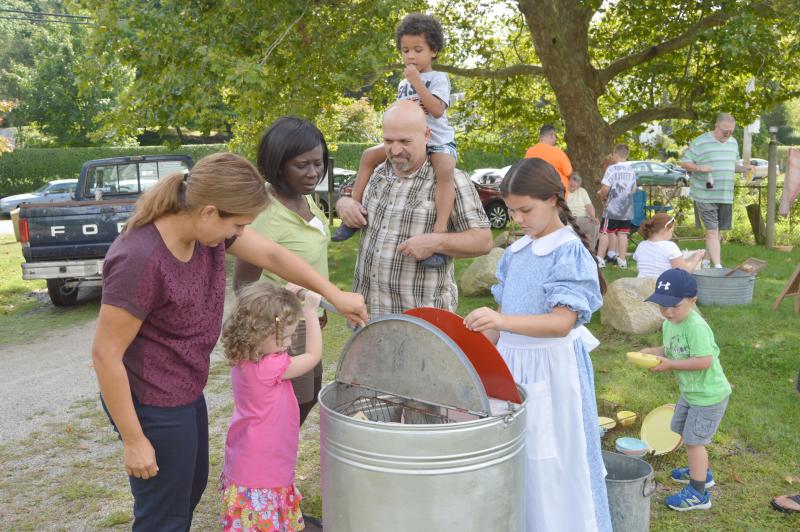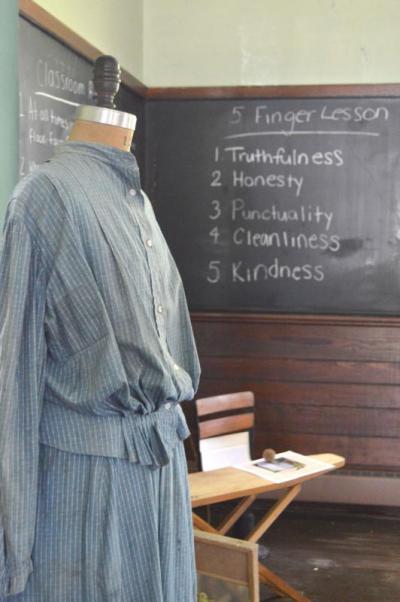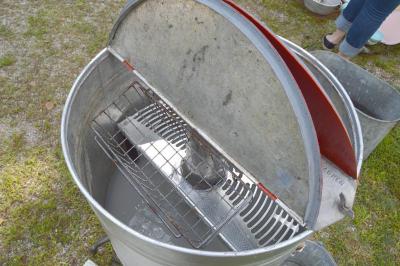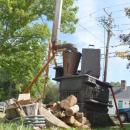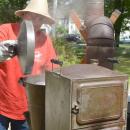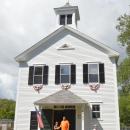Historical Society jumps back to the late 1800s
Much to their parents’ surprise, kids had fun washing dishes and doing laundry this past weekend. At the Russells Mills Schoolhouse, interactive displays and various curators gave young people a glimpse into to the past.
The weekend event, "Come Back in Time," was partially based on a pilot program developed for Dartmouth schools’ third graders.
“We started a pilot [program] with DeMello school five years ago. We thought that this was a good repurposing of this building,” said Sue Guiducci, chair of the Education Committee for the Dartmouth Historical and Arts Society.
The schoolhouse, located on 1205 Russells Mills Road, was built in 1871. In 1914, after the population outgrew the space, the school was moved down the street to where Salt Marsh Pottery is located today. The old schoolhouse was repurposed into a library in 1916 and remained open until 2007.
Today, the space is leased by the Dartmouth Historical and Arts Society from the Town and is used as a teaching space. The second floor is designed to look like a classroom, complete with wooden desks and messages about proper behavior written on the chalkboards.
“They come and spend half a day in the building. They go upstairs and we conduct class the way it was conducted in the late 1800s. They learn how to use a drop spindle, write with ink and a stylus and play games,” Guiducci said.
This year, the third graders will learn local history at the schoolhouse and through a field trip around town.
“Years ago we used to visit old Dartmouth on a bus tour,” said Principal Cathy Maccini of DeMello Elementary. “A couple of Quinn [Elementary] teachers resurrected that last year. Now what we’re doing is combining the two. One class will be visiting [the schoolhouse] while another is going around on the bus tour, and then they switch.”
At "Come Back in Time," the public was invited to see period-appropriate collections of coins and clothing. Outside, kids were busy scrubbing clothing in a washbasin and pumping water into an rudimentary dishwasher from 1914.
Guiducci said the washing machine would likely have been for a large family or a church. Water was pumped through a slotted cylinder centerpiece and sprayed onto the racks of dishes that surround the metal cylinder.
Dartmouth resident Stacy Ryall was busy stitching a petticoat on a portable, hand-powered sewing machine. She powered the machine with one hand while feeding fabric through the machine with the other.
The Singer model sewing machine she was working on had been developed in 1911, but she said the technology was available earlier. She found her specific model, which was built in 1937, on eBay.
Petticoats were used to add size to the dress and were worn beneath a dress and bustle.
“This type of dress usually have a bustle in the back,” said Ryall. “You’d have one petticoat, the bustle and then another petticoat going over the bustle to smooth out the lines. Then the skirt.”
She said she was working on under layers for now, but hopes to make a complete outfit in the future.
“If you don’t have your under layers when you measure to do your outer layers, your outer layer doesn’t fit,” she said.
Outside, in a 300-pound wood stove, Wilson Mull was steaming brown bread in tin cans.
“Today, when they make a stove, everything’s welded together. Today’s stoves are wicked heavy,” said Mull.
He was able to transport the stove from his home to the front lawn of the schoolhouse because the stove can easily be disassembled. The doors lift off and the main portion of the stove, which Mull said weighs around 130 to 150 pounds, detaches from its base.
He said that baked beans and brown bread used to be a popular Saturday night dinner. He made his with raisins.
“There’s a lot of molasses, but no egg, which is why you steam it instead of bake it,” he said.



